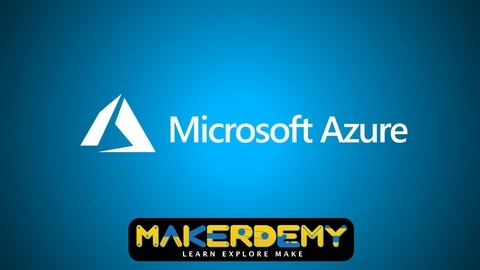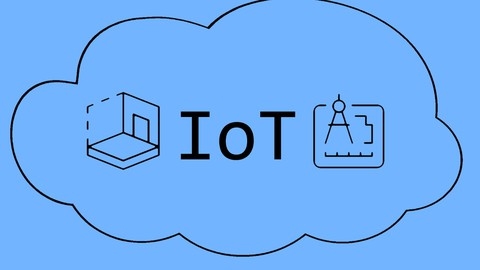The Internet of Things (IoT) is revolutionizing the way we interact with the world, connecting physical devices to the cloud to gather data, automate processes, and create intelligent solutions.
Microsoft Azure IoT is a powerful platform that empowers developers to build and manage their own IoT solutions, connecting everything from sensors and smart devices to industrial equipment and entire cities.
Learning Azure IoT unlocks a vast world of possibilities, enabling you to build innovative IoT applications, contribute to a booming industry, and shape the future of connected devices.
Finding a comprehensive and engaging Azure IoT course can be a daunting task, especially on a platform like Udemy with so many options available.
You want a course that’s both practical and theoretical, taught by experienced instructors, and covers the latest best practices.
We’ve reviewed countless Azure IoT courses on Udemy, and based on our analysis, Introduction to Microsoft Azure IoT is our top pick overall.
This course is renowned for its hands-on approach, using practical examples and projects to help you grasp essential concepts like connecting devices to your Azure IoT Hub, coding with Arduino and Python, and visualizing data in the Azure portal.
The instructor provides clear explanations and valuable insights, making the learning process engaging and effective.
While Introduction to Microsoft Azure IoT is our top pick, there are other great courses available on Udemy.
Keep reading to discover our recommendations for different learning levels, specific skills, and career goals, and find the perfect Azure IoT course to start your journey.
Introduction to Microsoft Azure IoT
You’ll start with the basics, exploring the architecture of Azure IoT and setting up your free account.
Hands-on projects immediately engage you, like connecting a SparkFun ESP32 Thing to your Azure IoT Hub.
You’ll learn to code in Arduino and send sensor data to your hub.
The course then moves on to using Python with your Raspberry Pi, connecting an HC-SR04 Ultra-Sonic sensor and visualizing the collected data in the Azure portal.
You’ll gain valuable experience working with the Service Bus Topic and creating Shared Access Policies, allowing you to control your devices effectively.
Beyond the basic setup, you’ll delve into advanced concepts like scheduling actions and sending user notifications.
You’ll explore various tools for visualizing sensor data and gain a strong understanding of the security aspects of the Microsoft Azure IoT platform, including setting up X.509 security in your Azure IoT Hub.
This course is well-structured and provides a solid foundation for individuals looking to build and manage their own Internet of Things solutions using Microsoft Azure IoT.
Azure IoT - The Complete Guide
This course is your passport to becoming an expert, guiding you from the very basics of cloud computing to the intricate workings of Azure’s powerful IoT solutions.
You’ll begin by building a solid foundation, exploring essential cloud concepts and getting hands-on experience with the Azure Portal – your control center for managing Azure services.
From there, you’ll dive into the heart of Azure IoT, mastering key concepts like IoT Hub, a central point for managing your connected devices.
You’ll learn how to communicate with these devices using protocols like MQTT, understand the concept of Device Twins, which allow you to create digital representations of your devices in the cloud, and even master the art of securely enrolling devices using the Device Provisioning Service (DPS).
This course isn’t just about theory; it’s designed to equip you with practical skills.
You’ll gain confidence using powerful tools like Azure CLI and PowerShell, giving you direct control over your Azure environment.
You’ll learn to send and receive messages between devices and the cloud, mastering real-time control with Direct Methods.
You’ll even delve into managing device updates with Jobs and monitor the health of your devices using metrics and logging.
Looking for a simpler way to build IoT applications?
This course introduces you to IoT Central, a platform that allows you to create applications without needing complex coding.
You’ll learn to configure device templates, manage rules and actions, and even create custom dashboards to visualize your data.
Need to bring intelligence closer to your devices?
You’ll discover how to use IoT Edge to deploy modules directly onto devices, making them more responsive and efficient.
The course also explores the fascinating world of Digital Twins, allowing you to create detailed digital models of your physical devices and environments.
These models enable you to simulate how your devices interact, making it easier to design and optimize your IoT systems.
Finally, the course takes you on a journey through security best practices, exploring how to protect your devices and data from unauthorized access.
You’ll learn about Defender for IoT, a powerful security service that helps you monitor and protect your IoT environment.
And as a bonus, you’ll receive the Azure IoT Handbook, a handy resource that summarizes all the key concepts and techniques you’ve learned, ensuring you’re always ready to put your new skills into practice.
Microsoft Azure IoT For Beginners
This course dives deep into the world of Azure IoT, offering a comprehensive and practical learning experience.
You’ll start with the fundamentals of IoT, understanding how devices connect and the advantages of using a cloud platform like Azure.
You’ll then explore Azure’s architecture, getting familiar with its components and how they work together.
The course includes a hands-on guide to setting up your Azure account and navigating the Azure portal, making it easy to get started.
Key Azure IoT services like IoT Hub, DPS, Stream Analytics, Service Bus, Blob Storage, Logic Apps, and Time Series Insights are covered in detail.
You’ll learn to connect and manage your IoT devices using these services through practical examples and exercises.
The course emphasizes hands-on learning by guiding you through installing and configuring the Azure IoT Python SDK on a Raspberry Pi 4 and the Azure library on an ESP32.
You’ll master secure connection protocols for sending data to the cloud and process that data using Stream Analytics.
The highlight is the end-to-end Azure IoT project.
You’ll design and implement a real-world solution using Time Series Insights for data visualization, solidifying your understanding of how different Azure IoT services work together.
If you’re looking to develop your skills in building and deploying secure and scalable IoT solutions, this course is worth considering.



